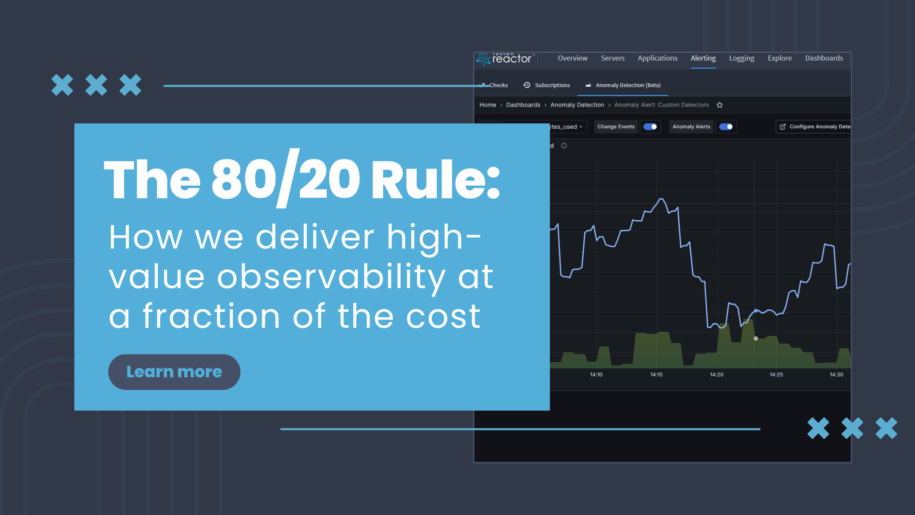The 80/20 Rule: How We Deliver High-Value Observability at a Fraction of the Cost
In the rapidly evolving world of technology, observability has become essential for maintaining the health and performance of applications and infrastructure. While several big names like Datadog and New Relic dominate the market, they come with a hefty price tag that can be prohibitive, especially for startups and small-to-medium-sized enterprises (SMEs). This is where we come in.
Our observability solution offers a robust and comprehensive platform at a fraction of the cost, thanks to our unique approach, which we often describe using the 80/20 rule. In this blog post, we’ll explore how this principle not only differentiates us from mainstream vendors but also empowers our customers to achieve high-value observability without breaking the bank.
Understanding the 80/20 Rule in Observability
The 80/20 rule, also known as the Pareto Principle, suggests that 80% of outcomes come from 20% of efforts. Applied to observability, this means that the majority of the value you derive from monitoring your systems can be achieved with a subset of the features offered by high-end tools like Datadog and New Relic.
While these mainstream vendors offer an extensive suite of features and capabilities, the reality is that most organizations only utilize a fraction of them. This often leads to paying for features that are rarely or never used. Our observability platform focuses on delivering the core 20% of features that generate 80% of the value—at a much lower cost.
Why Price Matters in Observability
For many organizations, especially those in the early stages of growth, budget constraints are a significant factor in decision-making. Investing in a costly observability tool can feel like a financial burden rather than a business enabler. Here’s where we stand out:
- Cost-Efficiency: We offer a pricing model that scales with your needs, ensuring you only pay for what you use. Our solution is designed to deliver the most critical observability features, allowing you to maintain system reliability and performance without overpaying for unnecessary extras.
- Focused Functionality: We streamline the observability process by concentrating on the features that matter most. This reduces costs and simplifies implementation and management, leading to faster time-to-value.
- Scalability: As your business grows, our platform scales with you, offering additional features and capabilities as needed without forcing you into expensive upgrades.
The High Cost of Mainstream Vendors
Mainstream observability vendors like Datadog and New Relic offer comprehensive platforms, but their pricing structures often include hidden costs and complex billing. These tools are powerful, but they are designed for enterprises with large budgets and complex needs. For many organizations, this results in paying for:
- Unused Features: A significant portion of the feature set may remain unused, yet it is still included in the pricing.
- Premium Support: High-end support packages that might not be necessary for smaller teams.
- Data Overages: Unexpected data volume increases can lead to substantial overage fees, further escalating costs.
Our Approach: High-Value Observability Without the High Costs
Our platform is built on the principle that you don’t need to overspend to achieve great observability. Here’s how we deliver:
- Core Feature Set: We provide the essential tools for monitoring, alerting, and troubleshooting, ensuring you have everything you need to maintain system health and performance.
- Transparent Pricing: Our pricing is straightforward and predictable, so you can confidently budget. We don’t believe in hidden fees or surprise charges.
- Efficient Resource Utilization: We optimize data collection and storage, reducing overhead and passing the savings on to you.
- Community and Support: While we offer dedicated support options, we empower our users with community resources and documentation to solve problems efficiently.
Conclusion: The 80/20 Advantage
Choosing the right observability platform balances features, performance, and cost. With our 80/20 approach, we focus on delivering the features that provide the most value at a fraction of the cost of mainstream vendors like Datadog and New Relic. This allows you to achieve the same level of observability, without the financial strain.
In a world where every dollar counts, why pay more for features you don’t need? With our solution, you can invest in what truly matters—keeping your systems running smoothly and your business growing.










